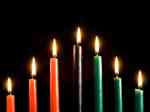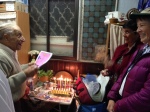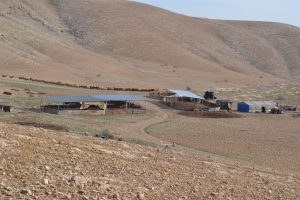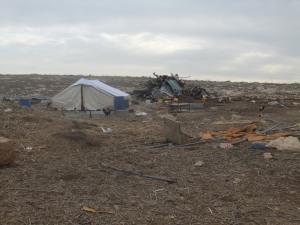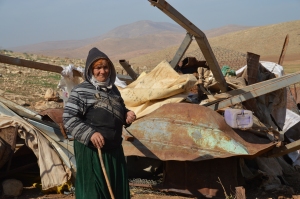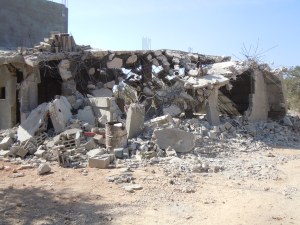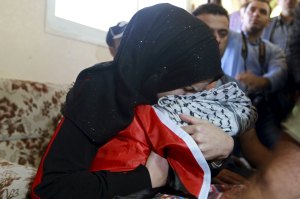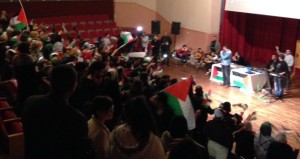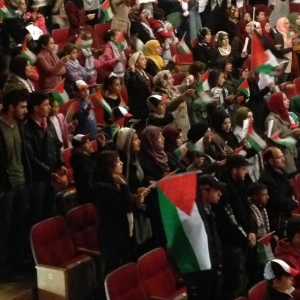
Gaza Strip ~ Map Credit: UNOCHA
Below is a long post from Maureen Tobin, who recently returned from Gaza ~ Gaza, a place besieged ~ Gaza, the 360 square km open air prison where over 1.8 million Palestinian human beings seek to eke out a living in the face of inhumane conditions and against all odds ~ Gaza, with an average age of 16, 80% living below the poverty line, 90% of the water unsafe to drink, over 80% unemployment, yet boasting a 92% literacy rate ~ Gaza, an example of the human will to live life in spite of everything to the contrary ~ Gaza, a place both feared and forgotten ~ With gratitude to Maureen, I share her reflections because it is of utmost importance that we remember…

Photo Credit: Public Domain
“We arrived in Israel on a Tuesday and left for Gaza early Wednesday morning for a fairly uneventful crossing, though we wished we could photograph the checkpoint (not allowed as it is a ‘military zone’). It’s hard to capture the experience without visuals – the huge terminal, locked booths, intricate maze of turnstiles and passages emptying into a courtyard with doors without handles, where one waits for a door to magically open for brief intervals. Our wait was longer than usual in the entry terminal, meeting first with the soldier and then the border guard. Finally we are cleared and board the golf cart to the Palestinian Authority checkpoint and then the Hamas checkpoint, where we passed through with the help of our good friend, the Ahli Hospital driver.
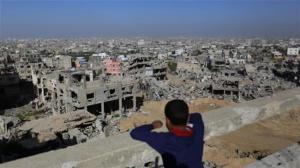
Gazan Boy ~ December 2014
Photo Credit: Public Domain
“It is hard to know what to say about Gaza. It felt very different from our visit last December: many more cars and people on the streets, the then-missing but typical piles of goods for sale, everything from shoes to tee-shirts to pomegranates and all kinds of vegetables. There was palpably more life than last winter, traffic back to its typical cacophony where there are no rules of the road and everyone drives wherever they choose, weaving in and out of donkey carts, passing other cars and trucks on either side, all with horns blaring constantly.
“So life on the streets felt greatly back to normal, and we had the good fortune to be invited by our friend to the baptism of her niece’s baby – a wonderfully happy occasion with everyone (except us) dressed to the nines for the occasion, lots of ceremony, dozens of children, balloons, etc. All in all, we felt a resurgence of life totally different from our last visit 11 months ago.
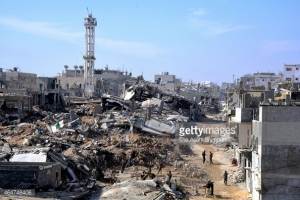
Shejaiya Neighborhood ~ February 2015
Photo Credit: Getty Images
“And yet, and yet – nothing is really ‘normal.’ We drove back though Shujaiya, the community so totally devastated by the bombing of July 2014. Gone, for the most part, were the miles of rubble, of bombed out apartment buildings. Much of the land has been cleared, though there are piles of salvaged metal and stones everywhere, ready to be recycled. Some, but little sign of rebuilding – lots of empty space, and many, many buildings pocked with bullet holes, burned out floors, partially standing apartments. We drove through an industrial zone that is still largely a ghost town – huge corrugated metal factories (milk and yogurt, cement, furniture), most without roofs, just shells of buildings. All the people who worked there are now part of the huge unemployed population – more than two-thirds of Gazans depend on food relief from the UN and other NGOs for survival. Children are everywhere, digging through dumpsters for plastic to sell or food to eat. And people (some 100,000+) still living on the streets, in the cemeteries, in the cartons furnished by church and NGO groups for temporary housing – all families have had to leave the UNRWA schools so that school could resume, two shifts a day, three hours per shift. Not much education but at least the kids are in school and not totally on the street as they were last December.

Ahli Hospital ~ Gaza
Photo Credit: Public Domain
“The Ahli Hospital, as always, is an oasis, though one totally surrounded by the chaos and noise of the streets that permeate every corner of the hospital complex. New this year is a ‘psycho-social’ program for children suffering from PTSD (essentially all children in Gaza). There in the library and in a wonderful new play yard, 2,000 children a week come for therapy, play, and respite. 90% of the children are ‘OK’ with minimal therapy, the rest being sent to government programs for the severely distressed. It is hard to believe the percentage, but watching the kids play, we could believe it. And, of course, they all wanted to shake our hands and use their English: ‘What’s your name?’
“Other programs continue to amaze – we visited the hydro therapy rooms again and saw one little girl with a burned foot being treated. We are always surprised that the place is largely empty, but we then learned that is because people come very early in the day (some 35 per day) as they can only run the boiler for hot water two hours each morning. The usual lines of mothers and babies at the pediatric clinic, lines at the emergency clinic, and a remarkable maternity clinic, where we learned that the hospital strongly enforces a four-hour rule, as the mothers want to leave immediately after giving birth! Most impressive is the mammography clinic (with its 2008 machine, though a new one is on order via Israel due to arrive ‘someday’). Not only do women get mammograms but they get lessons in self-examination. Most exciting is that there are classes for husbands to help them understand that a mammogram and treatment can save their wives’ lives and help preserve the family. This has been successful as they began with 400 mammograms in 2009 and now do 5,000 a year. Sadly, there is no radiation available and little chemo. Women must have mastectomies rather than lumpectomies and follow-up treatment, but lives are saved. On and on go the wonders of this little hospital where imaginative leadership by Suhaila, Samira, Dr. Maher, and many others, plus enormously dedicated staff, create constant miracles – the parade of patients in the front gate is testimony – old men and women, mothers in scarves and some with full face covering attest the to the trust people have in Ahli Hospital.
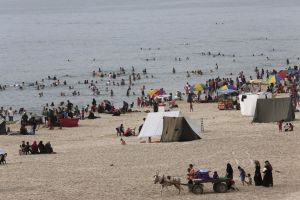
Beach in Gaza
Photo Credit: Public Domain
“We had a wonderful evening with Raghda and Amal, both of whom work for United Nations Relief Works Agency (UNRWA) – Raghda in administration and public relations and Amal in protective services, largely responding to the needs of Gazans suffering from all sorts of legal and personal problems, including a high rate of domestic violence and child abuse, not surprising in a culture, especially a patriarchal one, in which most men are unemployed and highly frustrated. Both of these women are amazing – so bright, so knowledgeable, so realistic about the situation in which they work and live, and yet filled with hope, convinced that life in Gaza could be wonderful if people were ever freed from the blockade. They cited many examples of the imaginative and entrepreneurial work in progress despite everything. Neither is naive and both shared stories of their war experiences – harrowing stories of the bombing when their building got a ‘warning rocket’ during the war last summer and they had to evacuate, barely escaping death when they went back into the building at the last moment and the building across the street was bombed.
“Both Raghda and Amal talked about the critical need for people to find places to relax and find joy. Those who have some money go to nice restaurants like the roof garden spot we met, others go to corner cafes, and others go by donkey cart to the beach promenades, but everyone tries to escape reality for a bit of time on Thursday evenings and Fridays, the Muslim holy day.

Young Women Take a Selfie ~ Gaza
Photo Credit: Public Domain
“We left early on Friday as the checkpoint closes early, and last week Hamas closed it all day, but we had no problem departing. All in all, we were struck more than ever by the contrasts, which are simply the way life is here. Palestinians are living in and have been living in untenable circumstances for far too long, but somehow what we took away from Gaza was a feeling of awe at their resiliency – a commitment to life, to everyday joys wherever they can be found, and an absolute dedication to sumud, to remaining steadfast. Hopefully, there will be an end to this current round of violence, but it cannot truly end until Palestinians achieve full rights and freedom. The brutality of the current Israeli regime with its street assassinations, its recurrent assaults on Gaza, and all the ongoing horrors of occupation simply will not eradicate the Palestinian commitment to life. As we all know, there is no military solution. When Israel and its US and others supporters figure that out, maybe, maybe there can be a new beginning …”


 May our waiting this advent not be passive but active ~ May we light a candle against whatever darkness ~ May we put our energy and effort into creating the peace we seek and that this land and our world so desperately need ~ I think the kin-dom dream of the first-century teacher from Nazareth whose birth is remembered in this season is mirrored in the words of John Lennon …
May our waiting this advent not be passive but active ~ May we light a candle against whatever darkness ~ May we put our energy and effort into creating the peace we seek and that this land and our world so desperately need ~ I think the kin-dom dream of the first-century teacher from Nazareth whose birth is remembered in this season is mirrored in the words of John Lennon …






